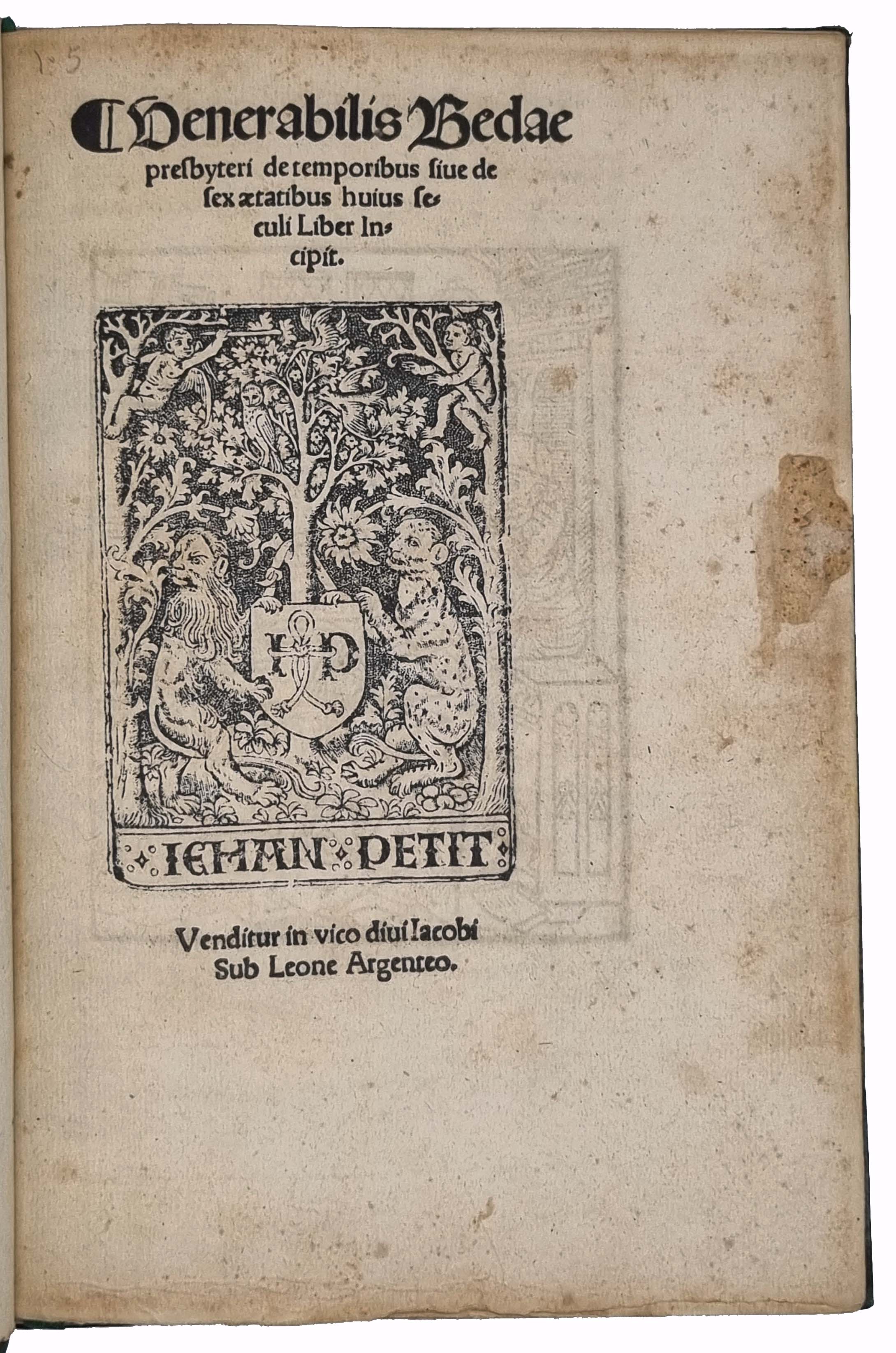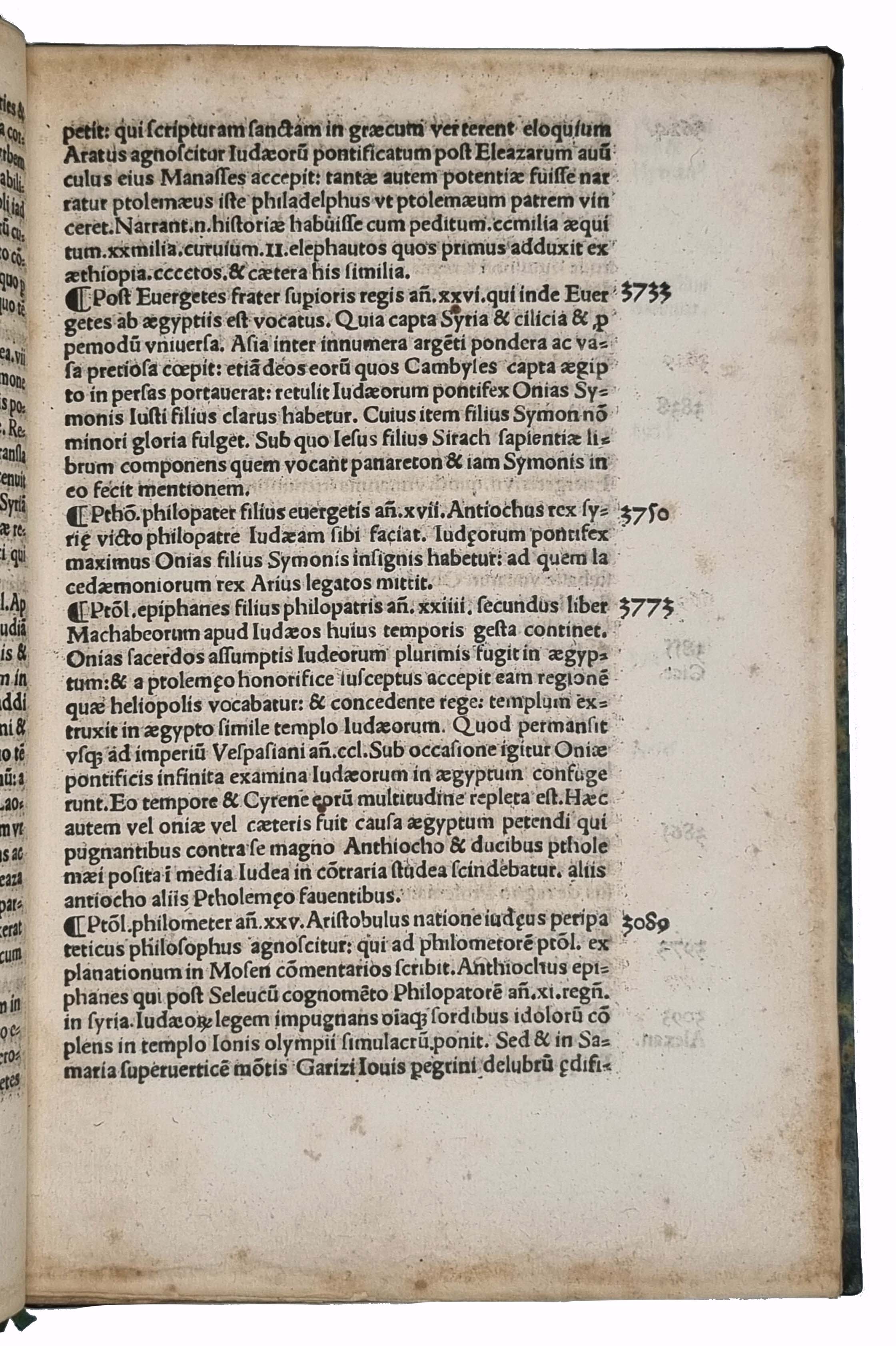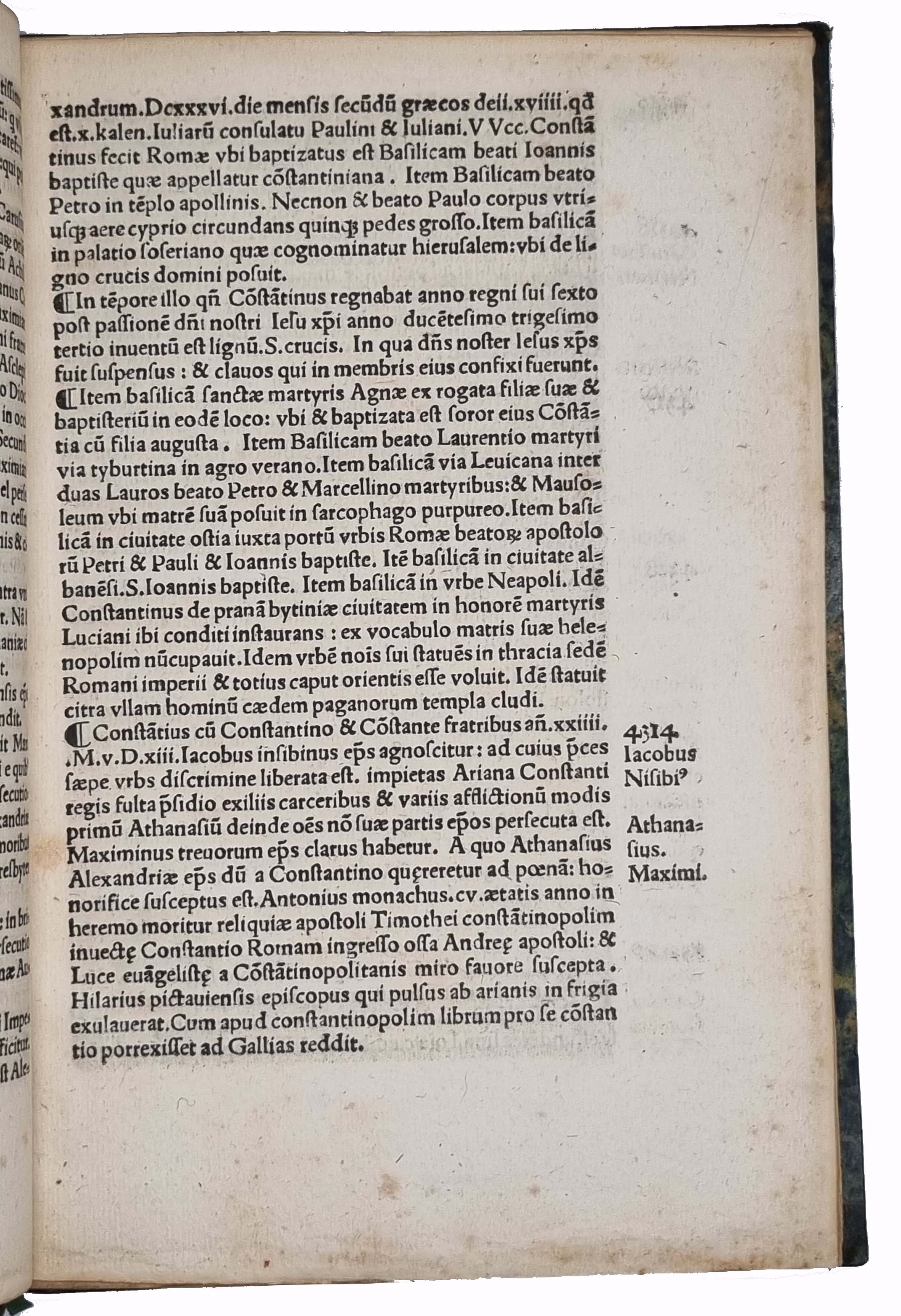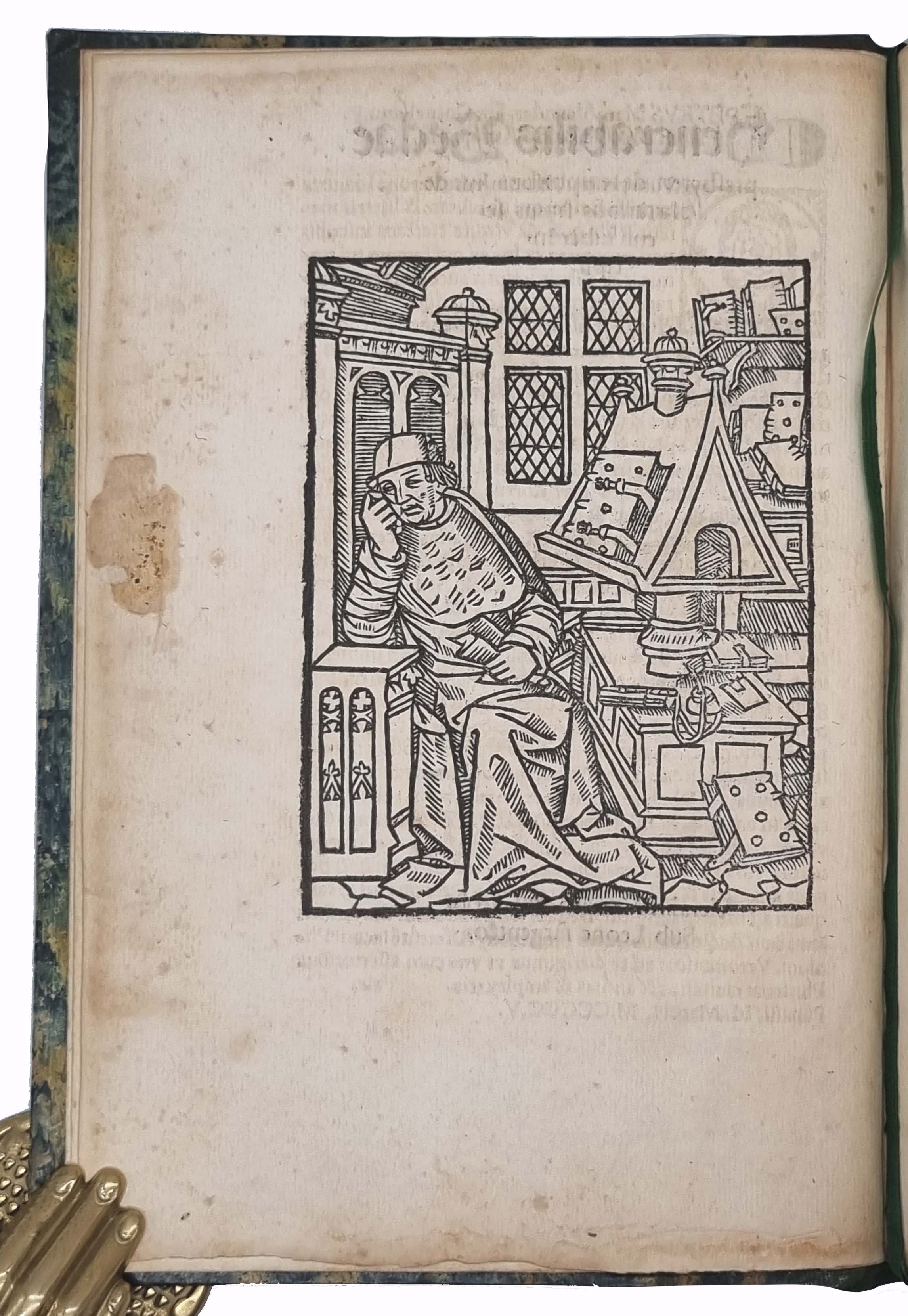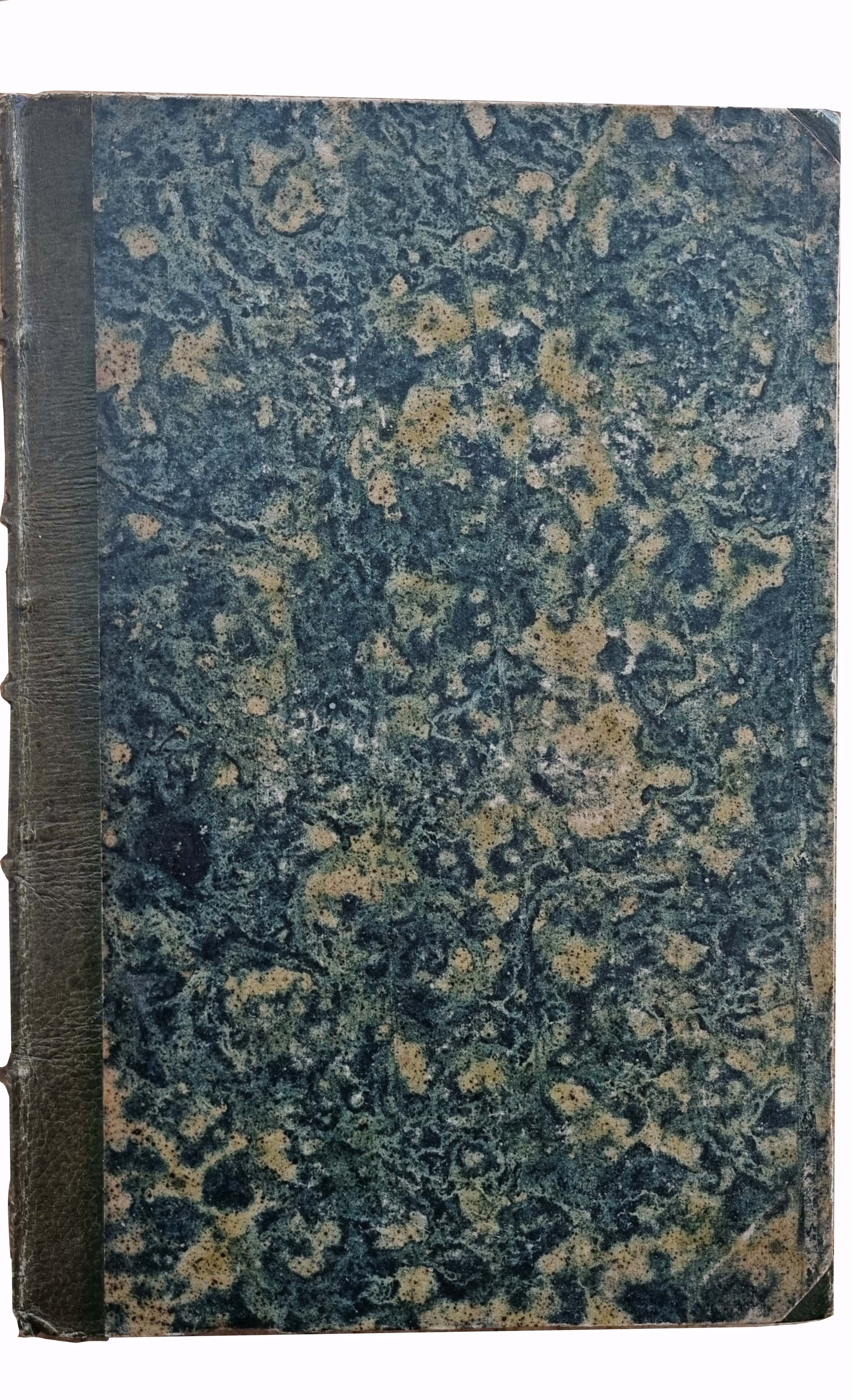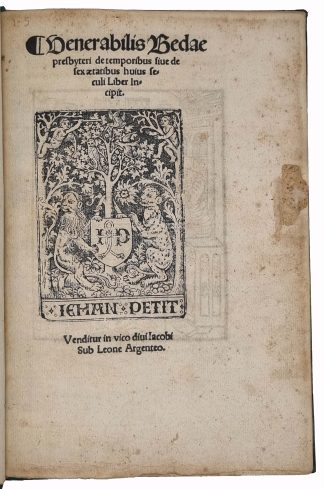BEDE, the Venerable Saint
Venerabilis Bedae Presbyteri De temporibus siue De sex aetatibus huius seculi liber incipit
Paris, Iehan Petit venditur in vico Diui Iacobi sub Leone argenteo, 1507£2,950.00
Small 4to. 30 unnumbered leaves. a-d8.4, e6. Roman letter. Jean Petit’s fine metal-cut white on black criblé device, with a leopard and lion, fine full page woodcut of a scholar in his study on verso of title, woodcut white on black criblé initials, engraved armorial bookplate of M. le Marquia de Fortia with his manuscript shelf mark on pastedown, printed label of M. Eyries above. Light age yellowing, a few leaves a bit browned, light mostly marginal spotting, small stain to outer blank margin of t-p, small tear in blank margin of d4. A good, crisp, tall copy, mostly uncut in lower margins, in lovely early C19 half green morocco, over green marbled boards, by Simier ‘Reliure du Roi’, (signed on spine), spine with gilt ruled raised bands, double gilt ruled in compartments, large fleuron gilt at centres, title lettered in gilt, a block of additional blank leaves.
Rare and beautifully printed second edition of the Venerable Bede’s chronology of the six ages of the world taken from the De Temporibus, his “Little book about the fleeting and wave-tossed course of time”, published for the first time in this form, in 1505 at Venice. Bede wrote a bibliography of his own works at the end of his “Ecclesiastical History of the English People” in which he lists “two books, one on the nature of things and the other on Chronology (item de temporibus); also a longer book on chronology (item de temporibus librum unum maior). .. Medieval readers knew it as De temporibus. …Its conventional medieval and modern title, De temporrum ratione (the reckoning of time) is apparently derived from the incipit of the books prologue; .. ‘Some time ago I wrote two short books in a summary style which were, I judged, necessary for my students; these concerned the nature of things and the reckoning of time.’ .. The Reckoning of Time is about measuring time and constructing a Christian calendar, or what later medieval writers called computus. It is the earliest comprehensive treatment of this subject, for though there was an abundant calendar literature before Bede’s day, it was both fragmentary and partisan in character. .. Bede’s book is very different in form and content..” Faith Wallis. Bede the Reckoning of Time.’
This edition contains that part concerning the six ages of the world and its chronology. “Bede wrote about the chronological aspects of the six ages in De Temporum Ratione and De Temporibus, and also the Epistola ad Plegwinam. The passage in De Temporibus is wholly chronological, simply listing the events delineating the boundaries of the ages and how long those ages lasted. … Chapter ten of De Temporibus has a comparison between the six days and six ages, but it simply details the events of each day and age, without attempting to draw any profound comparison between the two. However, in chapter sixty-six, Bede compared the six ages of the world to the six ages of man, drawing on Augustine’s writings. This produces a somewhat different exegesis, portraying the world in a terminal decline towards death in the sixth age, … In chapter seventy-one, Bede likened the six ages to the days of the Lord’s passion and resurrection, which he also did elsewhere. The fact that Bede connected the six ages both to the days of creation and to the days of Holy Week suggests that the six ages formed a fundamental part of his concept of time, and of the relation of that time to his Christian faith.” Bede’s Commentary on the Six Days of Creation and the Six Ages of the World in In Genesim’
“The world ages scheme provided a historical framework for the biblical and post biblical events of the past and it also defined Bede’s perception of the present. According to the scheme outlined in De Temporibus, the present day fell within a sixth and final age of historical time which would end with the death of the whole world” Peter Darby ‘Bede and the End of Time.’
A very good copy of this rare work from the library of the french historian and mathematician le Marquis de Fortia, whose particular interest in this work is made clear by his publication in 1805-09 of his own ‘Mémoires pour servir à l histoire ancienne du globe’.
BM STC. Fr. C16th. OCLC 54268322; Shaaber B404. Not in Brun or Fairfax Murray.In stock


